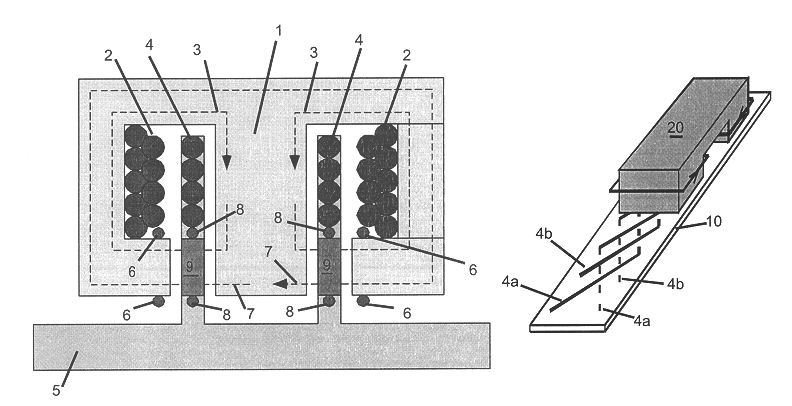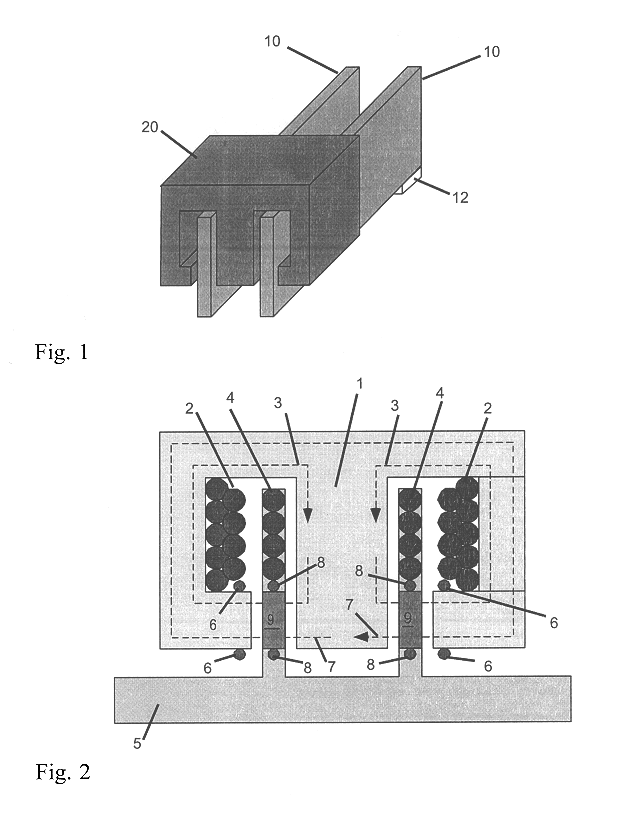System for inductive transfer of power, communication and position sensing to a guideway-operated vehicle
- Summary
- Abstract
- Description
- Claims
- Application Information
AI Technical Summary
Benefits of technology
Problems solved by technology
Method used
Image
Examples
example adapted
to Linear Motor Position Sensing
The invention is advantageously implemented in embodiments for position sensing and control of a linear synchronous motor (LSM). In this case it is essential that the position sensing be accurately aligned with the motor winding, which is typically wound in slots in a ferromagnetic structure. In preferred embodiments, applicant achieves enhanced alignment by configuring the inductive transfer winding on a printed circuit board, and forming the board itself with notches, holes or edges that mate with the pole, core or other structure of the motor itself. For example, alignment is achieved in one embodiment by using a printed circuit board with slots that pass over the teeth of the LSM stator. Many implementations are possible to construct the position sense winding. One layout is shown in FIG. 12. Here there are two phase windings, each with one turn. The position sensing winding is, by way of example, constructed with a pole pitch that is twice the po...
PUM
 Login to View More
Login to View More Abstract
Description
Claims
Application Information
 Login to View More
Login to View More - R&D
- Intellectual Property
- Life Sciences
- Materials
- Tech Scout
- Unparalleled Data Quality
- Higher Quality Content
- 60% Fewer Hallucinations
Browse by: Latest US Patents, China's latest patents, Technical Efficacy Thesaurus, Application Domain, Technology Topic, Popular Technical Reports.
© 2025 PatSnap. All rights reserved.Legal|Privacy policy|Modern Slavery Act Transparency Statement|Sitemap|About US| Contact US: help@patsnap.com



